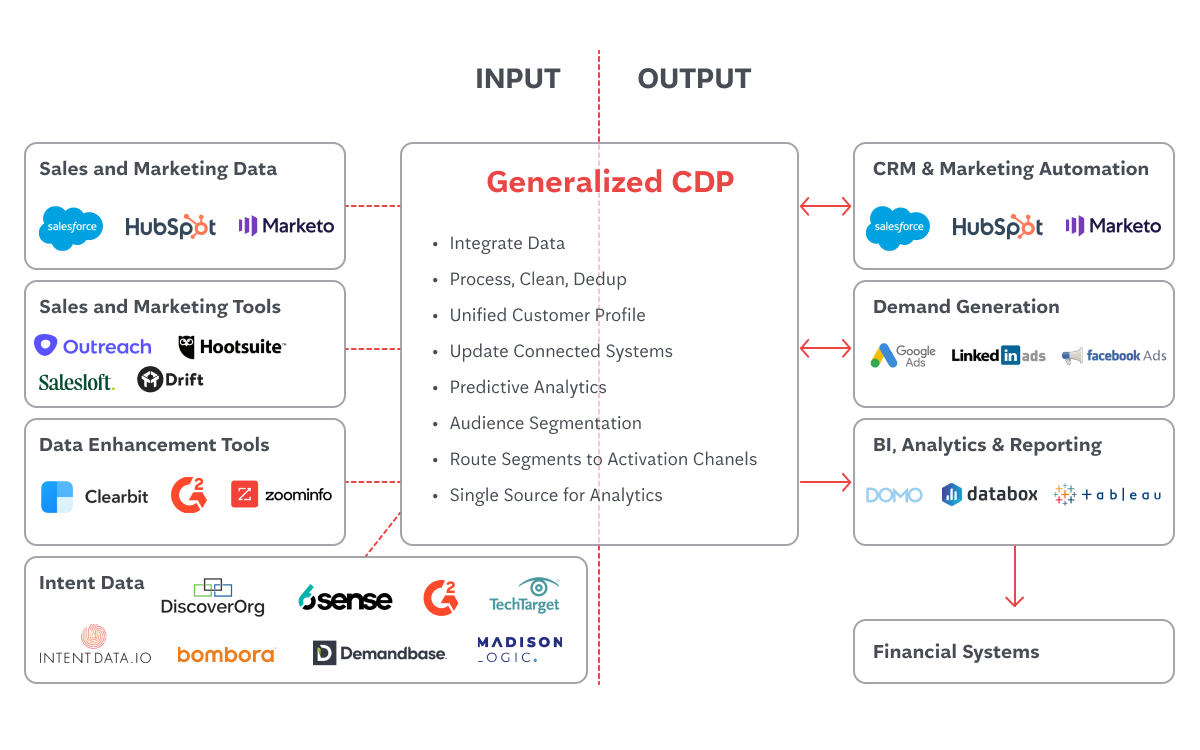We all thought we would attain some stability after the pandemic, but 2022 was very dynamic and recent trends (just to mention AI in advertising, the cookie-less reality and the end of Google Universal Analytics) affected the whole marketing industry.
With marketing budgets set for 2023, new challenges are once again in the queue for CMOs and marketing managers. Plus, with the global markets' economic uncertainty, you need to have a clear argumentation for marketing-related investments in 2023 and beyond.
Let’s start with technology. Your goal is not to defend or cut investments but to gain control over martech and get a comprehensive overview that enables you to use available technology more effectively. We want you to know what you can cut, what is paramount to the company’s revenue and how you can manage it smarter.
Technology is essential to all marketing departments
Technology is an important governing factor for how marketing departments work. Many companies already have good plans on how they will utilise technology to achieve the goal of a more seamless and data-driven customer journey across multiple communication channels. Here, you need to ask yourself a series of questions:
- How should we work towards this goal, especially when we will again face stricter requirements for predictable short-term results?
- Are there any untapped commercial opportunities in the technology we have?
- Are there any cost drivers we can cut?
- Can we replace current technology to save money and, at the same time, work more efficiently with the customer journey?
The importance of technology for a marketing department
Technology is the everyday life of today’s marketers. In fact, it constitutes a large part of the work in marketing departments. Almost everything you do – whether it’s briefing, graphic design, content creation and management, execution of communication or analytics – is based on technical tools.
In the surveys we conduct, we see a clear trend in the marketing departments. They are now deciding much more about which marketing technology the company should invest in. Moreover, technology has become an increasingly large part of marketing budgets. Depending on the survey, it varies between 25% and 30%.
Technology creates silos – or breaks them down
Marketing teams tend to revolve around the technology they use, but the fact is, technology can build silos or tear them down altogether. Since so much of the work centres around technology, your team should build on and orient itself to cutting-edge expertise. However, you have to be careful here. There is a substantial risk that, as a result, you will focus less on the overall customer experience. Every addition to your IT/martech architecture has to be well-thought-out, especially from the UX perspective.
As technology has become more and more complicated, this tendency has become stronger, and there are just a few large companies that do not struggle with technology-based silos. Technology must be adapted to work processes and make them more efficient, not the other way around. When done right, technology facilitates collaboration and a holistic customer experience.
For instance, Optimizely aims to help marketing teams reduce tech-related complexity to deliver real results. Read more about that on our blog: How to achieve Boundless Digital Invention with Optimizely.
Technology drives profitability but requires investments
Technology is the main building block for the customer journey of the future. If you want to be fully data-driven and develop smart customer journeys across available channels, you need to focus on two elements:
- The technology that makes this possible
- The team/company that will help you with developing and implementing them
Those who get it done properly see solid, measurable results. On the other hand, if you lack a holistic perspective on the technology used in your marketing department, you will see small improvements at best.
The other side of the coin is even worse – you can find yourself in a situation where you are investing in expensive projects and solutions that don't really affect the customer experience. Of course, the technology requires investments (both time and money), and, we admit, they can be difficult to defend in uncertain times. That's why you need full control over the technology you use, have a clear plan for it and concentrate on solutions that produce real results.
The huge potential of customer data
There is no problem with the lack of customer data in most organisations. The problem is that the customer data is spread across multiple systems, both front-end systems driving the customer experience and back-end systems such as ERP. A CDP is a category of systems that can be thought of as “key chains” connecting data from multiple sources to the same customer, creating a Single Customer View. The data in the Single Customer View is then available to other systems, and the CDP can decide which data is sent where. A CDP should be integrated into your other customer-facing systems using both batch transfers and real-time APIs for personalised web and app experiences.
With a CDP, you can use all that data to offer your customers high-quality, tailored CX (customer experience) and fulfil their expectations. A CDP will allow you to both simplify your current marketing stack as well as enable you to create a more modern data driven customer experience.
Author

Kjetil Løvlie
Strategic Advisor
Kjetil helps companies become digitally mature. He is particularly concerned with customer data and the good use of it in customer communication while, at the same time, focusing on technology and data being used responsibly and sustainably. Before joining NoA Ignite, Kjetil had worked with CRM, marketing automation and sales solutions, i.a., as a Head of Marketing Personalization at Norwegian Air.
Related articles
![A well-crafted prompt doesn’t just work once. It works across teams, channels, and campaigns. It can be tweaked for new use cases and refined based on what performs best.]()
June 27, 2025 / 4 min read
Prompts are not just for AI. Why building a prompt library pays off
Prompts aren’t throwaway lines. They’re repeatable, scalable assets that can streamline your marketing your team’s output. Learn how to build a prompt library that delivers.
![Woman using a wheelchair in the office settings]()
June 17, 2025 / 5 min read
What is accessibility and why it matters?
Accessibility ensures everyone — including those with disabilities or limitations — can read, navigate, and engage with your content equally.




